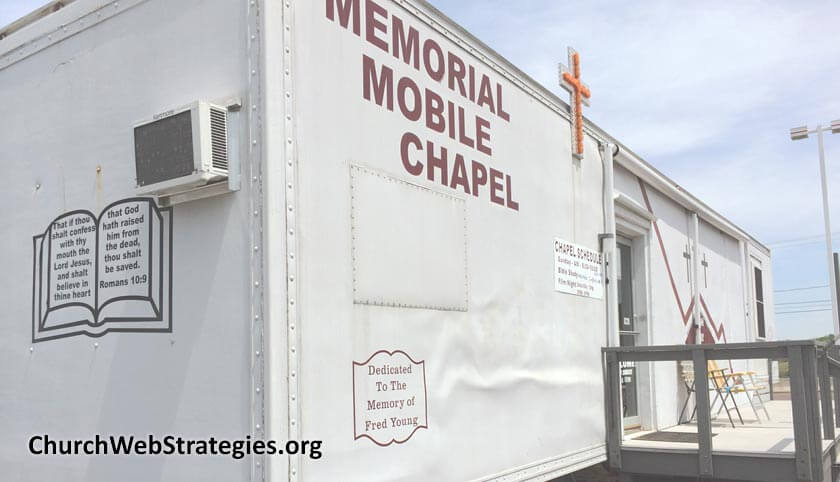The first electric general-use computer, ENIAC, was announced in 1946. Of course, this room-sized computer looks very different from today’s computing devices. Consequently, what churches looked like in 1946 is vastly different than what we see today. This forces us to re-think what churches look like, and what they need to succeed. In this article, I explore three examples of non-traditional churches and the digital tools that can both promote their presence and enhance the experience.
When you think of a “traditional church”, you probably think of a building with a bell tower and steeple, two service times listed outside the door, hymnals in the pews, and an organ to help the congregation carry the tune. Well, at least that is what I grew up with. Below are some examples of non-traditional churches and how technology can benefit them.
Rented Spaces
Many spaces are used for church services one or two days out of the week. Teams transport, setup, and teardown their church on a weekly basis. These are often a satellite location of a multi-site church. While I have talked about multi-site churches in the past, this is specific to rented spaces. In situations such as this, photography is crucial to your website and social media spaces; as your church will often not look like a church and most days of the week. Post photos of the outside, any signs you temporarily set up, as well as inside the location. Keep posting photos on social media and regularly update your website. This is important as the facility can change at a moment’s notice and without your prior approval or notice. Do everything in your power to ensure a new visitor knows they are in the correct spot.
Internet Campuses
I discussed in previous articles what an Internet Church Campus is and how it could work for your church. There are many considerations, but after learning more about the subject I think two rise to the top. The first is enough tech savvy people to set up, configure, and be on hand to troubleshoot the software. The second is the staff to run this campus. It may seem like an internet campus will run itself, but nothing will happen unless you have trained volunteers monitoring the chat rooms. This space where “real ministry” happens is crucial, as people from all over the world in a multitude of situations can come to your online service.
Mobile Churches
Instead of renting a physical building, I recently saw a church (featured in the photo above) that rents a space in a parking lot. Someone had renovated a semi-trailer into a church on wheels. It was complete with a small library and office for private conversations. It had a sound system and television worship, lyrics and recorded sermons. And of course, it had a few short rows of comfortable pews. Setups like this are used to hit multiple locations throughout the week. However, another use is in the wake of a natural disaster, where these trailers are deployed to where a traditional church once stood. Social media tools such as Foursquare allow you to “check in” to a location. By linking this to your Twitter and Facebook accounts, you can keep your congregation updated in real-time with your exact GPS coordinates.
Action Item
If you are part of a church that does not fit into a traditional mold, know that there are techniques and technologies you can use to better serve your congregation. This era of easier, faster, and more distributed communication can be utilized to better spread the Gospel message. Examine the ideas I outlined above, and if you have others, please consider leaving them in the comments for others to see.
Note: This article was inspired by the Memorial Mobile Chapel, pictured above. I saw it while at a rest stop along Interstate 80 in Pennsylvania.

